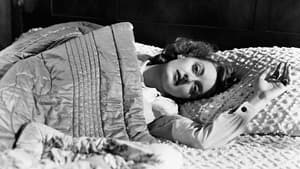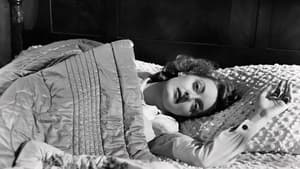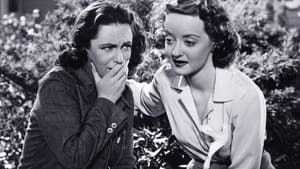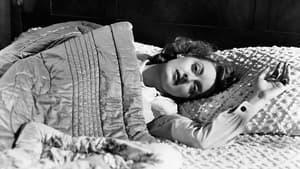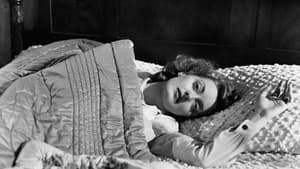Contact: [email protected]
Video Sources 0 Views
- Watch trailer
- Dark Victory

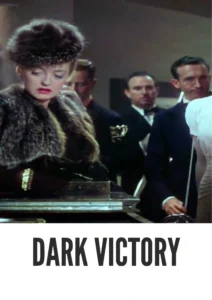
Synopsis
Table of Contents
ToggleReview: Dark Victory (1939) – A Timeless Drama of Love and Loss

Introduction
“Dark Victory” (1939) stands as a testament to the enduring power of love and resilience in the face of adversity. In this review, we’ll delve into the significance of this classic drama, exploring its timeless themes and enduring impact on audiences.
Check The Full Colorized Movies List
Check Our Colorized Movies Trailer Channel
Understanding Dark Victory 1939: Director, Cast, and Genre
Directed by the legendary Edmund Goulding, “Dark Victory” (1939) showcases his mastery of storytelling and character development. The film features a stellar cast, led by the incomparable Bette Davis in one of her most iconic roles. With its blend of romance, tragedy, and introspection, “Dark Victory” (1939) captivates viewers from start to finish, immersing them in a world of passion, heartache, and redemption.
Exploring the World of Dark Victory 1939: Plot and Characters
At its core, “Dark Victory” (1939) follows the journey of a young socialite, played by Bette Davis, who faces a life-altering diagnosis that forces her to confront her mortality and reevaluate her priorities. As she navigates the complexities of love, loss, and self-discovery, she forms deep connections with those around her, including her devoted doctor, played by George Brent, and her loyal friend, portrayed by Geraldine Fitzgerald. Through their interactions and struggles, the film delves into the depths of the human experience, offering insights into the nature of love, friendship, and the quest for meaning in a world filled with uncertainty.
The Art of Film Colorization
While “Dark Victory” (1939) was originally filmed in black and white, the decision to release it in a colorized format opens up new possibilities for viewers to experience its richly textured world in vibrant detail. By adding color to the film’s palette, colorization breathes new life into familiar scenes and characters, allowing audiences to immerse themselves in the beauty and complexity of Goulding’s vision.
Early Colored Films: A Brief History
The history of colored films stretches back to the early days of cinema, with filmmakers experimenting with various techniques to add color to their creations. From hand-tinted frames to early Technicolor processes, the evolution of colored film has been marked by innovation and creativity. As technology has advanced, so too has the art of colorization, with modern digital techniques offering filmmakers unprecedented control over the color palette of their films.
Dark Victory 1939 and Its Early Colored Version
The decision to release “Dark Victory” (1939) in a colorized format offers viewers a fresh perspective on the timeless tale of love and loss. While some purists may argue that colorization compromises the film’s artistic integrity, others see it as an opportunity to introduce classic movies to a new generation of viewers and breathe new life into beloved stories. Ultimately, the early colored version of “Dark Victory” (1939) enhances the film’s emotional impact and visual appeal, inviting audiences to rediscover its timeless themes and unforgettable characters in vivid detail.
The Debate Over Film Colorization
The debate over film colorization has raged for decades, with passionate arguments on both sides of the issue. Proponents argue that colorization revitalizes classic movies for modern audiences, making them more accessible and engaging. However, detractors maintain that colorization detracts from the authenticity of the original work and diminishes its artistic value. As the debate continues, filmmakers and audiences alike are left to navigate the complexities of preserving cinematic history while embracing the possibilities of new technologies.
Examining Dark Victory 1939 as an Early Colored Film
As with any colorized classic, the impact of colorization on “Dark Victory” (1939) is a matter of personal interpretation. Some may argue that it enhances the film’s visual appeal and immerses viewers in its world, while others may feel that it detracts from the stark beauty of the original black and white version. Regardless of one’s stance on the issue, there’s no denying the enduring power of “Dark Victory” (1939) as a timeless drama that continues to resonate with audiences around the world.
Influence and Legacy: Dark Victory 1939’s Impact on Cinema
“Dark Victory” (1939) has left an indelible mark on the world of cinema, inspiring countless filmmakers and captivating audiences with its timeless themes and unforgettable performances. From its powerful performances to its hauntingly beautiful cinematography, the film continues to resonate with viewers of all ages, reaffirming its status as a classic of the drama genre.
Director’s Cinematic Legacy: Beyond Dark Victory 1939
Edmund Goulding’s influence extends far beyond “Dark Victory” (1939), with a diverse body of work that continues to captivate audiences around the world. From “Grand Hotel” to “The Razor’s Edge,” Goulding’s films are celebrated for their depth, complexity, and emotional resonance, solidifying his legacy as one of the greatest directors of Hollywood’s Golden Age. Through his groundbreaking work, Goulding has left an indelible imprint on the world of cinema, inspiring generations of filmmakers to follow in his footsteps.
Themes Explored in Dark Victory 1939
“Dark Victory” (1939) explores a myriad of themes, from the fragility of life to the enduring power of love. Through its richly drawn characters and poignant storytelling, the film invites viewers to contemplate the mysteries of the human experience and the inevitability of death. As audiences immerse themselves in the world of “Dark Victory” (1939), they are reminded of the fragility of life and the importance of living each moment to the fullest.
Reception and Controversy Surrounding Dark Victory 1939
Upon its release, “Dark Victory” (1939) received widespread critical acclaim, with many praising its powerful performances, gripping storyline, and emotional depth. However, the decision to release the film in a colorized format sparked debate among purists, reigniting the age-old discussion surrounding film preservation and artistic integrity. Despite the controversy, “Dark Victory” (1939) remains a beloved classic that continues to resonate with audiences of all ages, reaffirming its status as a timeless masterpiece of the drama genre.
Where to Watch Dark Victory 1939 Online
For those eager to experience the timeless magic of “Dark Victory” (1939), the film is readily available on popular streaming platforms such as Netflix, Amazon Prime, and Hulu. Whether you choose to watch it in its original black and white format or the early colored version, “Dark Victory” (1939) promises to transport you to a world of love, loss, and redemption, where the human spirit shines brightest in the darkest of times.
FAQs About Dark Victory 1939
Q: Is “Dark Victory” (1939) based on a true story? A: No, “Dark Victory” (1939) is a fictional tale crafted by screenwriter Casey Robinson, who drew inspiration from various sources to create a compelling story of love and loss.
Q: Who are the main actors in “Dark Victory” (1939)? A: “Dark Victory” (1939) features an ensemble cast led by the talented Bette Davis, whose powerful performance as a young socialite facing a devastating diagnosis captivates audiences from start to finish.
Q: What awards did “Dark Victory” (1939) win? A: “Dark Victory” (1939) received critical acclaim for its powerful performances and compelling storyline, earning several prestigious nominations and awards, including an Academy Award nomination for Best Actress for Bette Davis.
Q: Why was “Dark Victory” (1939) released in a colorized format? A: The decision to release “Dark Victory” (1939) in color was made to introduce the film to a new generation of viewers and enhance its visual appeal for modern audiences. While the choice to colorize the film sparked debate among purists, it ultimately allowed “Dark Victory” (1939) to reach a wider audience and ensure its continued relevance in the annals of cinematic history.
Conclusion
“Dark Victory” (1939) remains a timeless classic that continues to captivate audiences with its powerful performances, gripping storyline, and emotional depth. Whether viewed in its original black and white format or the early colored version, the film serves as a poignant reminder of the fragility of life and the enduring power of love and resilience in the face of adversity. As we reflect on the legacy of “Dark Victory” (1939), let us celebrate its status as a masterpiece of the drama genre and a testament to the enduring power of cinema to inspire, entertain, and provoke thought.
